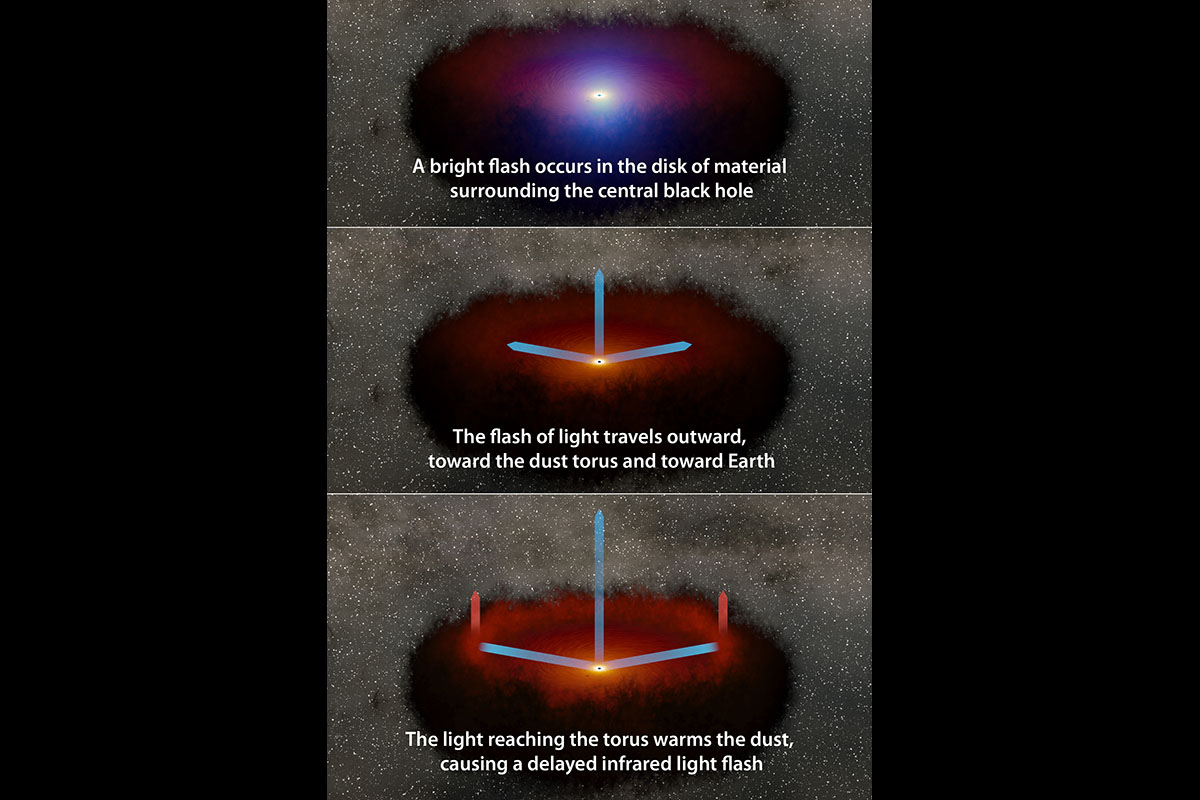A disk of hot material around a supermassive black hole emits a burst of visible light, which travels out to a ring of dust that subsequently emits infrared light. The blue arrows show the light from the disk moving toward the dust and the light from both events traveling toward an observer. (NASA/JPL-Caltech)
Home A disk of hot material around a supermassive black hole emits a burst of visible light, which travels out to a ring of dust that subsequently emits infrared light. The blue arrows show the light from the disk moving toward the dust and the light from both events traveling toward an observer. (NASA/JPL-Caltech) A disk of hot material around a supermassive black hole emits a burst of visible light, which travels out to a ring of dust that subsequently emits infrared light. The blue arrows show the light from the disk moving toward the dust and the light from both events traveling toward an observer. (NASA/JPL-Caltech)
A disk of hot material around a supermassive black hole emits a burst of visible light, which travels out to a ring of dust that subsequently emits infrared light. The blue arrows show the light from the disk moving toward the dust and the light from both events traveling toward an observer. (NASA/JPL-Caltech)


